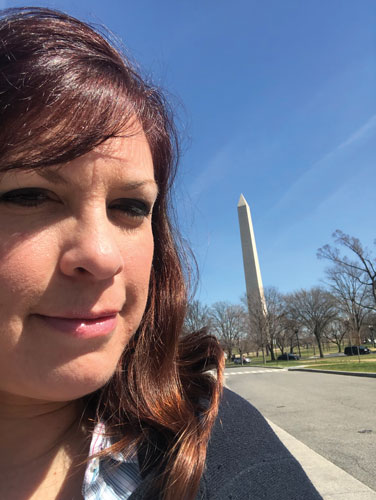7/1/2020
Initial USDA Coronavirus Farm Disaster Relief Announced
Jennifer Zurko

On May 19, USDA announced its rule implementing the Coronavirus Food Assistance Program. The rule officially appeared in the May 20 Federal Register.
The rule lays out USDA’s first step in providing direct payments to livestock, dairy and specialty crop farmers resulting from COVID-19 pandemic market disruptions. It includes sector-specific provisions for relief, as well as total payment limits. However, the rule doesn’t yet extend access to relief funds to several agricultural sectors that don’t neatly fit into a typical farm commodity model, meaning prices and market dynamics are generally not public information and not well understood. Unfortunately, at least for now, nursery and floriculture crops fall into this category.
So, for the moment, nursery and greenhouse growers find themselves in a sort of no man’s land—on one hand described in the rule as “other eligible crops,” but not yet actually eligible to apply for relief at this time.
What’s next? USDA is also publishing a Notice of Funding Availability (NOFA)—Additional Commodities Request for Information. It includes a number of specific questions for commodities not covered, including nursery crops. USDA has indicated that it needs affected growers to provide information in response to this notice, to help the Department determine how to structure payment rates. We urge growers hoping to be eligible to apply for relief to review the NOFA and consider responding to these questions.
Interested growers might also want to begin familiarizing themselves with the Farm Service Agency forms that will ultimately be needed to file claims. For a full list of the required forms, as well as contact information for your local FSA office, visit farmers.gov/cfap.
In the days ahead, we’ll continue to engage USDA, as well as Congressional and other allies, in the interest of severely impacted nurseries and greenhouses being able to apply for relief.
—Tristan Daedalus & Craig Regelbrugge, AmericanHort
Trucking Hours-of-Service Changes Finalized
The Federal Motor Carrier Safety Administration (FMCSA) issued a final rule in May providing flexibility measures for Hours of Service (HOS) rules. The agency ultimately chose to modify four areas of need that had previously been identified. The HOS changes are as follows:
• Increase safety and flexibility for the 30-minute break rule by requiring a break after eight hours of consecutive driving and allowing the break to be satisfied by a driver using on-duty, not driving status, rather than off-duty status.
• Modify the sleeper-berth exception to allow drivers to split their required 10 hours off duty into two periods: an 8/2 split or a 7/3 split—with neither period counting against the driver’s 14-hour driving window.
• Modify the adverse driving conditions exception by extending by two hours the maximum window during which driving is permitted.
• Change the short-haul exception available to certain commercial drivers by lengthening the drivers’ maximum on-duty period from 12 to 14 hours and extending the distance limit within which the driver may operate from 100 air miles to 150 air miles.
Time spent unloading and loading trucks can now be counted as breaks for drivers, which is a welcome change for horticulture, an industry that typically requires more time to load and unload live plants.
AmericanHort submitted public comments in support of HOS rule changes throughout the rulemaking process, as it was evident early on—
following the implementation of the electronic logging device mandate—that drivers wanted flexibility when faced with certain situations on the road. These changes will take effect 120 days after publication in the Federal Register.
—Tal Coley, Director of Government Affairs, AmericanHort
On Friday, May 15, AmericanHort and the H-2B Workforce Coalition sent a letter to President Trump outlining the important benefits that the H-2B program provides to seasonal businesses and their American workers. It also stresses the role of seasonal businesses in our nation’s economic recovery. This coalition letter demonstrates the broad industry support for the H-2B program. It will assist our Congressional supporters with outreach to the Administration as the Departments of Labor and Homeland Security review potential changes to temporary worker visa programs.
President Trump’s April 22 Presidential proclamation temporarily restricting legal immigration also called on the Departments of Homeland Security and Labor to review current temporary worker programs. The proclamation states:
Within 30 days of the effective date of this proclamation, the Secretary of Labor and the Secretary of Homeland Security, in consultation with the Secretary of State, shall review nonimmigrant programs and shall recommend to me other measures appropriate to stimulate the United States economy and ensure the prioritization, hiring, and employment of United States workers.
Recently Senators Cotton (R-AR), Cruz (R-TX), Grassley (R-IA) and Hawley (R-MO) wrote to the President asking him to suspend the issuance of all temporary worker visas for 60 days and to suspend the issuance of new H-2B visas for one year or until unemployment returns to normal levels, whichever comes first. The letter states that high school and college students can easily fill seasonal jobs in landscaping and at summer resorts.
Despite this letter, we continue to see broad Congressional support for the H-2B program. Our Congressional champions continue to weigh in with the Administration about the importance of the program.
—Laurie Flanagan, Chair of the H-2B Workforce Coalition, and Craig Regelbrugge, VP of Government Relations & Research, AmericanHort